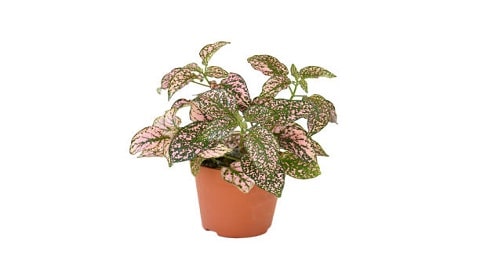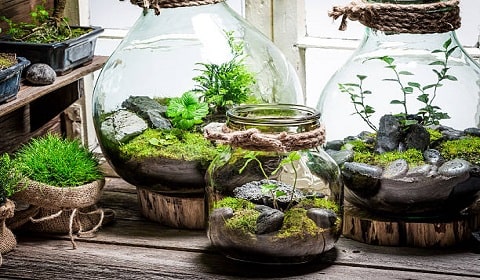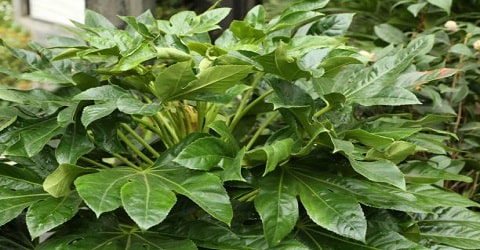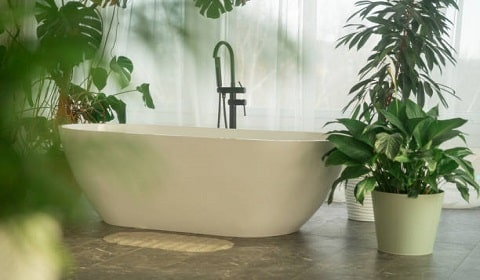Terrarium plants thrive in sealed or open glass containers, creating miniature ecosystems. These low-maintenance, slow-growing plants adapt to their environment, whether warm and humid or dry. Typically housed in containers like large bottles with cork stoppers, terrariums offer controlled conditions for optimal growth. Selecting appropriate plants depends on the terrarium’s sealability.
Ideal choices remain compact, ensuring they don’t outgrow their confined space. These miniature gardens require minimal attention post-planting. Terrarium plants offer an aesthetically pleasing display while contributing to indoor air quality and providing a glimpse of nature within the home.
Which Plants Are Suitable for a Terrarium?
A closed terrarium creates a small tropical ecosystem, offering warmth and humidity with minimal light. Ideal for compact, low-maintenance tropical plants that flourish in moist, shaded conditions.
In contrast, an open terrarium lacks the humidity of closed ones, resembling an ornate plant pot. It poses watering challenges due to its shape, making desert plants the top choice—adapted to arid environments and requiring little upkeep.
Both terrarium types favor low-growing, easy-to-care-for plants. Cacti and succulents thrive in open terrariums, while closed ones accommodate tropical varieties. Choose wisely for a thriving microcosm.
Read More: Best Indoor Plants for Any Location
25 Best Terrarium Plants
Table of Contents
Closed Terrarium Plants
1. Asparagus Fern (Asparagus densiflorus)
Asparagus Fern (Asparagus densiflorus), a member of the Asparagaceae family, is a versatile plant native to South Africa. This hardy evergreen is celebrated for its delicate foliage, making it one of the best terrarium plants. Its feathery, arching stems add a touch of elegance to indoor spaces. Beyond its ornamental appeal, the Asparagus Fern also acts as an air purifier, improving indoor air quality by removing toxins.
Leaf Color Varieties: Green, sometimes with white or yellow variegation.
Light Requirement: Bright, indirect light.
Water Requirement: Keep soil evenly moist but not waterlogged.
Difficulty: Easy-care, tolerates some neglect, but may drop needles if conditions aren’t ideal.
Read More: Best Bedroom Plants
2. Moss (Various species)
Moss, belonging to various species within the Bryophyta family, thrives in damp, shaded areas worldwide. From the lush forests of the Pacific Northwest to the humid tropics, mosses are ubiquitous. Renowned for their ability to retain moisture and purify air, they’re hailed as some of the best terrarium plants. Their intricate textures and vibrant green hues not only enhance aesthetics but also provide a natural habitat for small creatures, making them invaluable in ecosystem restoration efforts.
Leaf Color Varieties: Green, with variations in texture and appearance.
Light Requirement: Low to moderate indirect light.
Water Requirement: Keep moss consistently moist but not waterlogged.
Difficulty: Easy if moisture levels and light are appropriate; may need occasional misting.
Read More: 23 Best Indoor Hanging Plants
3. Peperomia (Various species)
Peperomia, encompassing various species, belongs to the Piperaceae family. Native to tropical and subtropical regions worldwide, these resilient plants thrive in diverse climates. Renowned for their ornamental foliage, Peperomias are prized additions to indoor spaces and are among the best terrarium plants, offering lush greenery and easy maintenance. They purify indoor air, adding a touch of natural beauty while requiring minimal care, making them ideal choices for indoor gardening enthusiasts.
Leaf Color Varieties: Green, red, variegated, and silver-gray.
Light Requirement: Bright, indirect light; some tolerate low light.
Water Requirement: Allow soil to partially dry between waterings.
Difficulty: Generally easy-care; some varieties have specific needs but are adaptable.
4. Polka Dot Plant (Hypoestes phyllostachya)
The Polka Dot Plant (Hypoestes phyllostachya) is a charming member of the Acanthaceae family, native to Madagascar. Its vibrant foliage adorned with colorful spots makes it a popular choice for indoor decoration. As one of the best terrarium plants, it thrives in humid environments, adding a splash of color and vitality. Beyond its aesthetic appeal, the Polka Dot Plant also serves as a natural air purifier, enhancing indoor air quality.

Leaf Color Varieties: Green with pink, red, or white spots.
Light Requirement: Bright, indirect light; avoid direct sunlight.
Water Requirement: Keep soil consistently moist.
Difficulty: Easy; thrives in humid conditions with consistent moisture.
5. Pilea (Pilea peperomioides)
Pilea peperomioides, commonly known as Chinese money plant, belongs to the Urticaceae family. Native to southern China, it’s renowned for its round, coin-shaped leaves on slender stems, making it a captivating addition to any indoor garden. Often hailed as one of the best terrarium plants, Pilea not only adds aesthetic appeal but also purifies indoor air, contributing to a healthier living environment with its air-purifying capabilities.
Leaf Color Varieties: Bright green, with some variegated varieties.
Light Requirement: Bright, indirect light.
Water Requirement: Allow soil to dry slightly between waterings.
Difficulty: Easy-care; tolerates occasional neglect but prefers consistent moisture.
6. Creeping Fig (Ficus pumila)
Creeping Fig (Ficus pumila) is a species of evergreen vine in the Moraceae family, native to East Asia. This versatile plant thrives both indoors and outdoors, making it one of the best terrarium plants. Its tiny heart-shaped leaves and ability to climb and cover surfaces make it a popular choice for vertical gardens and green walls. Additionally, Creeping Fig is known for its air-purifying qualities, enhancing indoor air quality.
Leaf Color Varieties: Small, heart-shaped leaves in shades of green.
Light Requirement: Bright, indirect light.
Water Requirement: Keep soil evenly moist; mist foliage occasionally.
Difficulty: Easy; grows quickly but needs regular pruning to maintain size.
7. Arrowhead Vine (Syngonium podophyllum)
Arrowhead Vine (Syngonium podophyllum) is a popular species belonging to the Araceae family, native to Latin America and the Caribbean. Its arrow-shaped leaves and vibrant foliage make it a sought-after choice for indoor gardens and terrariums alike. As one of the best terrarium plants, it thrives in humid environments, purifying indoor air while adding a touch of natural beauty to any space. Its adaptability and low maintenance nature further enhance its appeal to plant enthusiasts.
Leaf Color Varieties: Variegated with green, white, and pink hues.
Light Requirement: Moderate to bright, indirect light.
Water Requirement: Keep soil consistently moist but not waterlogged.
Difficulty: Easy-care; tolerates various light conditions and regular pruning.
Read More: 24 Vegetable Garden Ideas
8. Spike Moss (Selaginella kraussiana)
Spike Moss (Selaginella kraussiana) belongs to the Selaginellaceae family and is a type of fern ally. Native to southern Africa, it thrives in moist, shaded areas. Renowned for its resilience and ornamental value, it’s one of the best terrarium plants, adding lush greenery to indoor spaces. Apart from its aesthetic appeal, Spike Moss helps regulate humidity levels and can contribute to air purification, making it a beneficial addition to any indoor environment.
Leaf Color Varieties: Lacy, fern-like foliage in shades of green.
Light Requirement: Low to moderate indirect light.
Water Requirement: Keep soil evenly moist; mist regularly.
Difficulty: Moderate; requires high humidity and consistent moisture.
9. Strawberry Begonia (Saxifraga stolonifera)
Strawberry Begonia (Saxifraga stolonifera), a charming member of the Saxifragaceae family, is native to East Asia. Its delicate, heart-shaped leaves adorned with silver veins make it a popular choice for terrarium enthusiasts. This low-maintenance plant thrives in humid environments and adds a touch of elegance to any indoor space. With its trailing habit and ease of care, Strawberry Begonia is among the best terrarium plants, offering both aesthetic beauty and air-purifying benefits.
Leaf Color Varieties: Green with silver markings and red undersides.
Light Requirement: Bright, indirect light.
Water Requirement: Keep soil consistently moist.
Difficulty: Easy; prefers high humidity and regular watering.
10. Prayer Plant (Maranta leuconeura)
The Prayer Plant (Maranta leuconeura), belonging to the Marantaceae family, is a captivating species native to the tropical regions of Brazil. Its striking foliage, marked with intricate patterns, makes it a popular choice for indoor gardening enthusiasts. Known for its ability to close its leaves at night, it has earned the nickname “Prayer Plant.” Beyond its ornamental appeal, this species also contributes to indoor air purification, making it one of the best terrarium plants available.
Leaf Color Varieties: Green with red veins; some variegated varieties.
Light Requirement: Medium to bright, indirect light.
Water Requirement: Keep soil consistently moist; high humidity preferred.
Difficulty: Moderate; requires high humidity and consistent watering.
11. Pothos (Epipremnum aureum)
Pothos (Epipremnum aureum), a member of the Araceae family, is a resilient vine native to the Solomon Islands. Known for its heart-shaped leaves, it thrives in various conditions, making it one of the best terrarium plants. Pothos not only adds aesthetic appeal with its lush green foliage but also purifies indoor air by removing toxins like formaldehyde, benzene, and xylene, thus promoting a healthier environment.
Leaf Color Varieties: Variegated green and yellow; solid green.
Light Requirement: Low to moderate indirect light.
Water Requirement: Allow soil to dry slightly between waterings.
Difficulty: Very easy-care; tolerant of low light and irregular watering.
12. African Violet (Saintpaulia)
The African Violet (Saintpaulia) is a vibrant flowering plant belonging to the Gesneriaceae family, native to Tanzania and adjacent southeastern Kenya. Renowned for its delicate blossoms and lush foliage, it thrives as one of the best terrarium plants, adding a splash of color to indoor spaces. Beyond aesthetics, African Violets also purify indoor air, making them beneficial for enhancing indoor air quality while adding beauty to any environment.
Leaf Color Varieties: Green, purple, pink, white, with various patterns.
Light Requirement: Indirect light; avoid direct sun.
Water Requirement: Water from the bottom to avoid wetting leaves.
Difficulty: Moderate; needs consistent watering and high humidity.
13. Earth Star Plant (Cryptanthus)
The Earth Star Plant, scientifically known as Cryptanthus, belongs to the Bromeliaceae family. Native to the tropical regions of South America, primarily Brazil, these plants are celebrated for their striking rosette-shaped foliage. Cryptanthus are esteemed as some of the best terrarium plants due to their compact size and low maintenance requirements. Beyond their ornamental appeal, they contribute to indoor air purification, making them a beneficial addition to any living space.
Leaf Color Varieties: Green with red, pink, or silver markings.
Light Requirement: Moderate to bright, indirect light.
Water Requirement: Keep soil evenly moist; avoid water pooling in center.
Difficulty: Moderate; requires high humidity and well-draining soil.
14. Jewel Orchid (Ludisia discolor)
The Jewel Orchid (Ludisia discolor), a member of the Orchidaceae family, is a stunning addition to any terrarium garden. Native to Southeast Asia, it thrives in moist, humid environments. With its deep green leaves adorned with striking silver veining, it adds a touch of elegance to terrarium setups. Besides its ornamental value, it helps maintain humidity levels and purifies the air, making it one of the best terrarium plants for both aesthetics and functionality.
Leaf Color Varieties: Dark green leaves with silver, white, or red veining.
Light Requirement: Bright, indirect light.
Water Requirement: Keep soil consistently moist; high humidity preferred.
Difficulty: Moderate; requires high humidity and consistent watering.
Open Terrarium Plants
15. Air Plants (Tillandsia spp.)
Air Plants, scientifically known as Tillandsia spp., belong to the Bromeliaceae family. Native to diverse ecosystems from forests to deserts in the Americas, these unique plants thrive without soil, absorbing nutrients and moisture through their leaves. Their adaptability makes them perfect for terrariums, enhancing aesthetic appeal and air quality. As some of the best terrarium plants, they offer effortless elegance and low-maintenance greenery to indoor spaces.
Leaf Color Varieties: Green, silver, gray; some turn pink when flowering.
Light Requirement: Bright, indirect light; can tolerate direct morning sun.
Water Requirement: Mist or soak in water weekly; allow to dry completely.
Difficulty: Easy; minimal soil required, but needs regular misting or soaking.
16. Echeveria (Various species)
Echeveria, belonging to the Crassulaceae family, encompasses various species renowned for their stunning rosette formations. Native to Central America and Mexico, these succulents thrive in arid climates and are popular as best terrarium plants. Their diverse shapes, colors, and low maintenance needs make them ideal for indoor gardening. Echeverias not only add aesthetic appeal to any space but also purify indoor air, promoting a healthier environment with their air-purifying abilities.
Leaf Color Varieties: Green, blue, purple, pink, with various leaf shapes.
Light Requirement: Bright, indirect light; some tolerate direct sun.
Water Requirement: Allow soil to dry completely between waterings.
Difficulty: Easy; needs well-draining soil and infrequent watering.
17. Cacti (Various species)
Cacti, belonging to the family Cactaceae, encompass a diverse range of species known for their remarkable adaptations to arid environments. Native to the Americas, from the deserts of the southwestern United States to the rainforests of South America, these succulents thrive in dry conditions and make for some of the best terrarium plants. Their unique shapes and vibrant blooms add aesthetic appeal, while their water-storing capabilities make them low-maintenance and beneficial for indoor environments.
Leaf Color Varieties: Green, blue, gray; some with colorful flowers.
Light Requirement: Full sun to bright, indirect light.
Water Requirement: Allow soil to dry completely between waterings.
Difficulty: Easy; requires well-draining soil and infrequent watering.
18. Jade Plant (Crassula ovata)
The Jade Plant (Crassula ovata), belonging to the Crassulaceae family, is a succulent native to South Africa and Mozambique. Its resilient nature and striking appearance make it one of the best terrarium plants, thriving in dry conditions and minimal care. Beyond its ornamental value, the Jade Plant also offers air-purifying benefits, removing harmful toxins from indoor environments, thus promoting healthier living spaces with its presence.
Leaf Color Varieties: Dark green, sometimes with red edges.
Light Requirement: Bright, indirect light.
Water Requirement: Allow soil to dry completely between waterings.
Difficulty: Easy; tolerates neglect but may become leggy in low light.
19. Button Fern (Pellaea rotundifolia)
The Button Fern (Pellaea rotundifolia), a charming member of the Pellaea genus in the Pteridaceae family, hails from the tropical regions of Australia and New Zealand. Its delicate, round fronds make it a favorite among enthusiasts of indoor gardening, especially as one of the best terrarium plants. Beyond its aesthetic appeal, this fern also aids in purifying indoor air, promoting a healthier living environment.
Leaf Color Varieties: Bright green, with small, round leaflets.
Light Requirement: Moderate to bright, indirect light.
Water Requirement: Keep soil consistently moist but not waterlogged.
Difficulty: Moderate; needs high humidity and consistent watering.
20. Haworthias (Various species)
Haworthias, encompassing various species, belong to the family Asphodelaceae. Native to southern Africa, these succulents thrive in arid regions. Renowned for their compact size and intricate rosette patterns, they’re among the best terrarium plants, adding charm to indoor gardens. Beyond aesthetics, they offer air-purifying benefits, enhancing indoor air quality. Their low maintenance and adaptability make them popular choices for both novice and experienced gardeners seeking resilient yet beautiful greenery.
Leaf Color Varieties: Green, with translucent, patterned leaves.
Light Requirement: Bright, indirect light.
Water Requirement: Allow soil to dry slightly between waterings.
Difficulty: Easy; tolerates neglect and prefers well-draining soil.
21. Mexican Snowball (Echeveria elegans)
The Mexican Snowball (Echeveria elegans), a succulent plant belonging to the Crassulaceae family, is native to Mexico. Its compact rosette form and blue-green leaves make it an excellent choice for succulent gardens and indoor displays. Renowned for its low maintenance and drought tolerance, this species thrives in well-draining soil and bright sunlight. Mexican Snowballs are among the best terrarium plants, adding a touch of elegance to any indoor space while purifying the air.
Leaf Color Varieties: Blue-gray, rosette-shaped leaves.
Light Requirement: Bright, indirect light.
Water Requirement: Allow soil to dry completely between waterings.
Difficulty: Easy; needs well-draining soil and infrequent watering.
22. Ox Tongue (Gasteria spp.)
Ox Tongue (Gasteria spp.), belonging to the family Asphodelaceae, is a succulent plant native to South Africa. Its thick, tongue-shaped leaves make it a distinctive addition to any succulent collection. Apart from its ornamental value, Ox Tongue plants are renowned for their air-purifying properties, making them excellent choices for indoor environments. With their low maintenance requirements and unique aesthetics, they are often regarded as among the best terrarium plants for enthusiasts.
Leaf Color Varieties: Dark green, with speckled or mottled patterns.
Light Requirement: Bright, indirect light.
Water Requirement: Allow soil to dry slightly between waterings.
Difficulty: Easy; tolerates neglect and prefers well-draining soil.
23. Crassula ‘Buddha’s Temple’ (Crassula ovata ‘Buddha’s Temple’)
Crassula ‘Buddha’s Temple’ (Crassula ovata ‘Buddha’s Temple’) belongs to the Crassulaceae family and is native to South Africa. Its intricate structure and vibrant coloration make it one of the best terrarium plants. This succulent is cherished for its low maintenance, resilience, and air-purifying qualities. With its unique temple-like shape and serene presence, it adds a touch of tranquility and elegance to any indoor space.
Leaf Color Varieties: Green, with stacked, triangular leaves.
Light Requirement: Bright, indirect light.
Water Requirement: Allow soil to dry completely between waterings.
Difficulty: Moderate; needs well-draining soil and infrequent watering.
24. Burro’s Tail (Sedum morganianum)
Burro’s Tail (Sedum morganianum) is a succulent belonging to the Crassulaceae family. Native to southern Mexico and Honduras, it thrives in arid climates. With its trailing stems adorned with plump, teardrop-shaped leaves, it’s a popular choice for terrariums, adding a touch of whimsy to indoor gardens. Its low maintenance nature, resilience to drought, and ability to propagate easily make it one of the best terrarium plants, ideal for novice gardeners.
Leaf Color Varieties: Gray-green, trailing succulent with plump leaves.
Light Requirement: Bright, indirect light.
Water Requirement: Allow soil to dry completely between waterings.
Difficulty: Easy; prefers well-draining soil and infrequent watering.
25. Tillandsia Air Plants (Various species)
Tillandsia Air Plants, belonging to the Bromeliaceae family, encompass various species known for their unique ability to thrive without soil. Native to diverse regions such as forests, deserts, and mountains of Central and South America, they add an exotic touch to any space. These versatile plants serve as excellent additions to terrariums, enhancing aesthetic appeal and air quality. Their minimal care requirements make them the best terrarium plants for enthusiasts seeking low-maintenance greenery.
Leaf Color Varieties: Green, silver-gray, with curly or straight leaves.
Light Requirement: Bright, indirect light; can tolerate direct morning sun.
Water Requirement: Mist or soak in water weekly; allow to dry completely.
Difficulty: Easy; minimal soil required, but needs regular misting or soaking.




